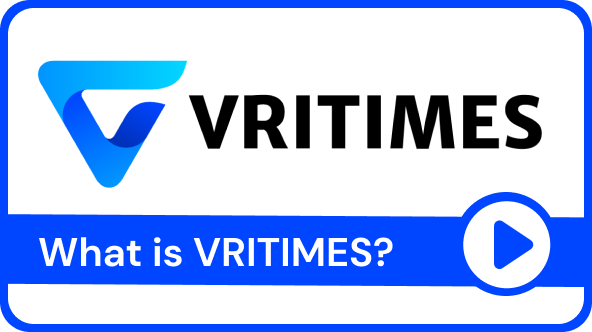/ Top Public Relations Activities That Lead To TV Exposure And Coverage
Top Public Relations Activities That Lead To TV Exposure And Coverage
Public Relations Activities To lead TV Exposure And Coverage—Television remains one of the most influential platforms for shaping public perception and expanding brand visibility. In a world flooded with digital content, gaining a spot on TV can instantly boost credibility and reach. However, getting your story picked up by a television network isn't just about luck it requires strategic public relations activities that align with what producers and journalists are looking for. From crafting compelling pitches to building strong media relationships, the right PR efforts can significantly increase your chances of landing valuable TV exposure. This article explores the top public relations activities that help brands break into broadcast media and stand out on screen.
Why TV still matters in today’s media landscape
In the age of digital content and social media, it’s easy to assume that television has lost its relevance. However, TV continues to be a powerful and credible medium, especially when it comes to shaping public opinion and building brand authority. Unlike the often-saturated and fast-paced nature of online platforms, television offers curated content backed by professional production and editorial standards. As a result, stories featured on TV are generally perceived as more trustworthy and significant.
Television also has a broad and diverse audience base, including demographics that may not be as active on digital platforms—such as older viewers or regional communities. A TV appearance not only lends legitimacy to a brand but also allows for strong visual storytelling that’s hard to replicate elsewhere. Importantly, TV content doesn’t just live on air. Many programs repurpose segments for YouTube, social media, and news websites, which means one TV appearance can generate multi-channel exposure. This hybrid presence makes television an important part of an integrated PR strategy.
5 Methods for Understanding TV Programs and Stations
Before approaching a TV station with a pitch or story, it’s important to understand what kind of content they typically cover, how they structure their programming, and what themes resonate with their audiences. Here are five effective methods to help you gather that insight:
1. Internet News & Social Media (SNS)
Digital platforms like online news sites, Twitter (X), Instagram, and TikTok provide real-time insight into what’s trending across the media landscape. By tracking viral stories, breaking news, and social conversations, you can gauge which topics are gaining momentum and may soon be picked up by TV stations. Many TV programs now source content ideas directly from social media trends, so staying active on these platforms helps you stay aligned with their editorial interests.
2. Press Releases from Broadcasters
Television networks and production companies regularly publish press releases to announce program updates, upcoming segments, featured themes, or coverage focus areas. Subscribing to these official updates allows you to anticipate what kind of stories they’re planning in advance, giving you a better chance to align your pitch with their needs. These press releases also help you understand each station’s tone, values, and branding direction.
3. Direct Communication with Program Staff
Reaching out to producers, editors, or reporters can give you invaluable insider knowledge. A brief call, email, or meeting can help you understand the types of content they’re currently seeking, their production timeline, and their preferences when reviewing PR materials. Building relationships over time with program staff not only increases your pitching success rate but also creates trust that can lead to repeat coverage.
4. Use of TV Researchers and Research Agencies
If you need a more analytical approach, consider working with professional media researchers or agencies that specialize in television analysis. These professionals monitor ratings, analyze viewer demographics, track program structures, and study broadcast trends across stations. Their data can help you identify which types of stories perform well on which networks, and when the best time is to approach them with your ideas.
5. Analyze High-Ranking Search Engine Results
When you search for current news topics or industry-specific keywords, pay attention to which TV station websites or programs consistently appear at the top of search engine results. These high-ranking results often indicate what’s getting media traction and which programs are leading the conversation in specific areas. Analyzing this data gives you a better understanding of how your content can be positioned to align with what producers and audiences are actively engaging with.
Also Read : How to Optimize Press Releases in an Era Where LLMO is Replacing SEO?
Story Elements That Increase the Likelihood of TV Coverage
To capture the attention of TV producers and editors, your story needs to align with what works on screen — both in content and in presentation. Here are six key elements that significantly improve the chances of your story being picked up for television coverage:
1. Seasonal or Weather-Linked Themes
TV shows often follow seasonal cycles — from holidays and school events to climate-related shifts like rainy or dry seasons. Stories that are timely and tie into what's happening during the season (e.g., summer travel trends, winter health tips, or extreme weather preparedness) tend to get more attention because they naturally fit into the programming calendar.
2. Focused and Globally Relevant Topics
TV producers look for stories that are not only easy to understand but also reflect broader societal or global issues. Clear themes that touch on current events, economic shifts, or social trends are more likely to resonate with both editorial teams and diverse audiences.
3. Visually Engaging Content
Television is a visual medium. Stories with strong visual elements — such as colorful settings, human interactions, dramatic scenes, or interesting product demonstrations — make for better footage and are more likely to be selected for broadcast.
4. Unconventional or Surprising Angles
Breaking away from clichés or public assumptions adds intrigue. Stories that challenge common stereotypes, reveal unexpected facts, or offer fresh perspectives can spark curiosity and make a segment more compelling.
5. Facts, Figures, and Superlatives
TV loves numbers — especially those that imply significance or uniqueness. Phrases like “the largest in the country,” “first of its kind,” “100 variations,” or “record-breaking sales” provide concrete value and are easier for viewers to grasp quickly.
6. Universally Relatable Subjects
Themes that cut across age, gender, and background — such as family, health, food, education, or everyday struggles — tend to attract wider viewership. If your story touches on emotions or experiences shared by many, it's more likely to appeal to a TV audience.
Seven Effective PR Techniques to Approach TV Stations
Securing TV coverage isn’t just about having a good story — it’s also about how you present it. These seven PR techniques will help you approach TV stations strategically and increase your chances of getting aired:
1. Timing is Key: Send Pitches 2–3 Weeks in Advance
TV programming teams work with tight editorial calendars. Sending your pitch too early risks being forgotten; too late and you’ll miss the window. The sweet spot is usually 2–3 weeks before the desired airing time, giving producers enough time to review, plan, and schedule.
2. Deliver to Key News Departments and Staff Rooms
Make sure your pitch reaches the right people. Identify the specific departments (e.g., news desk, lifestyle, human interest, or current affairs) and target producers, segment coordinators, or editorial assistants, not just general inboxes.
3. Include Strong Visuals and Reference Images
TV is a visual medium. Include images, B-roll options, or visual references that help producers quickly imagine how the story would look on screen. High-quality visuals increase the likelihood of your pitch being taken seriously.
4. Use Headlines That Convey Visual Impact Instantly
Your subject line or headline should immediately communicate what will be seen on TV, ideally in just 1–2 seconds. Focus on clarity, visual appeal, and emotional or social relevance. Think like a segment title or news teaser.
5. Start with the Conclusion
Producers don’t have time to read long introductions. Lead with the core message or key takeaway of your story. Give them the headline and the payoff first, then explain the details. This top-down structure respects their time and improves clarity.
6. Create “Precise Storytelling” Content
Your pitch should read like a ready-made segment. Structure your content, with a beginning, middle, and end, so it’s easy for producers to visualize how it can fit into their format. Highlight what’s unique and why it matters now.
7. Avoid Overly Personal or Pushy Approaches
While relationship-building is essential, being too persistent or informal can backfire. Avoid excessive follow-ups, emotional appeals, or personal pressure. Keep your approach respectful, timely, and professional.
Also Read: How To Analyze And Evaluate The Results Of Press Releases
VRITIMES: Best Press Release Distribution Services
In today’s fast-moving media landscape, getting your story seen by the right audience is crucial. VRITIMES stands out as one of the best press release distribution services for brands, startups, and professionals who want real results. With access to a wide network of reputable media outlets, SEO-friendly formatting, and real-time performance tracking, VRITIMES helps you amplify your message and build credibility. Whether you're launching a product, sharing company news, or managing a public campaign, VRITIMES ensures your press release reaches the right eyes locally or globally. It’s a seamless, reliable, and cost-effective way to make your brand’s voice heard.
Ready to get your story published and seen? Click HERE for further information.








